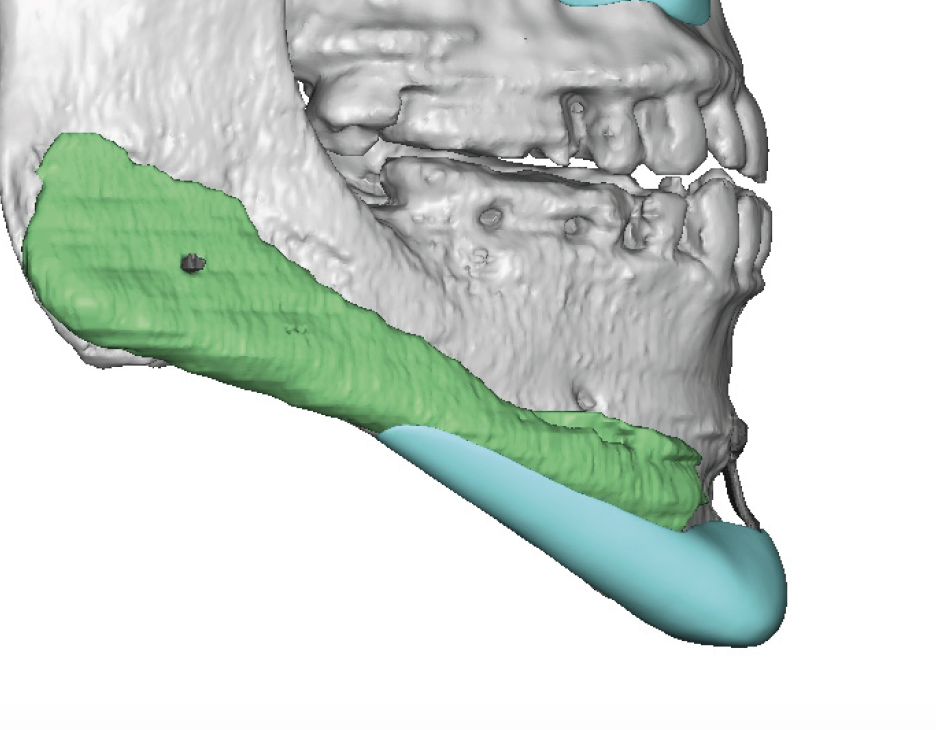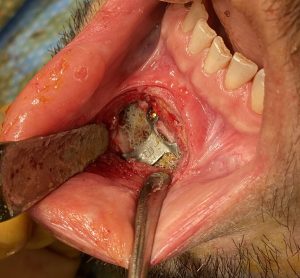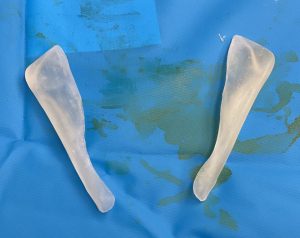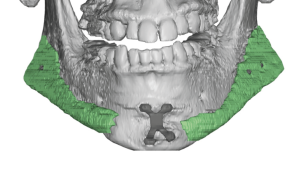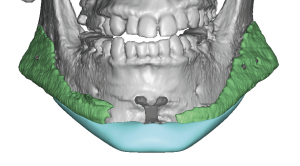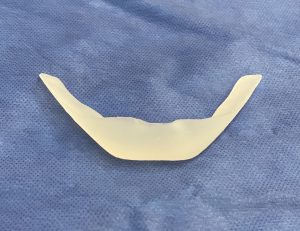Background: There are numerous surgical methods to aesthetic augmentation of the lower jaw which are typically performed by either all implants or a near complete bony movement. (chin wing osteotomy) One mixture of these two methods is a sliding genioplasty and standard jaw angle implants. The most comtemporary approach to this jaw augmentation version is a sliding genioplasty with custom jaw implants that fully connect to the advanced chin bone and crosses over the back end of the osteotomy lines for a smooth lower edge of the jawline.
This dual autologous-alloplastic approach to jawline augmentation is done when the amount of dimensional changes needed for the chin exceed the overlying soft tissue pad’s tolerance for a high implant load. Such tolerances are much greater with less risk with a bony genioplasty. A custom implant design approach can then be used to make extended jaw angle implants to complete the total jawline augmentation.
Some patients may potentially decide later, based on then result, that they desire a greater chin augmentation effect. Should that occur the augmenting the sliding genioplasty with an implant can always be done secondarily. Some additional horizontal and/or vertical implant augmentation can be achieved. But it is important to appreciate that the soft tissue chin pad will be tight and the augmentation should thus not be too ambitious.
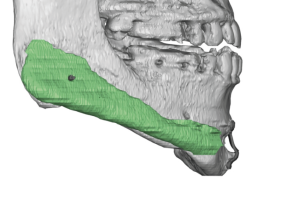
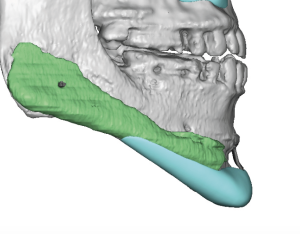

Like even an isolated sliding genioplasty a chin implant can almost always be added to it secondarily for some additional chin refinement. Such a chin implant must be relatively modest in size as the soft tissue chin pad has been expanded/stretched along with the bone movement. As a result the overlying soft tissue will be thinner and tighter than normal. In this case a custom chin implant was used to get the proper shape and fit to both the chin bone and the jawline implant behind it.
Case Highlights:
1) One uncommon technique for total jaw augmentation is the combination of a sliding genioplasty with custom jawline implants.
2) When additional chin augmentation is desired with this type of aesthetic jaw augmentation procedure an implant can used to provide the additional augmentation amount.
3) A custom chin implant can be used as an overlay on the bone and out along the sides with the understanding that the overlying chin pad will be tight given the prior bone movement.
Dr. Barry Eppley
World Renowned Plastic Surgeon

